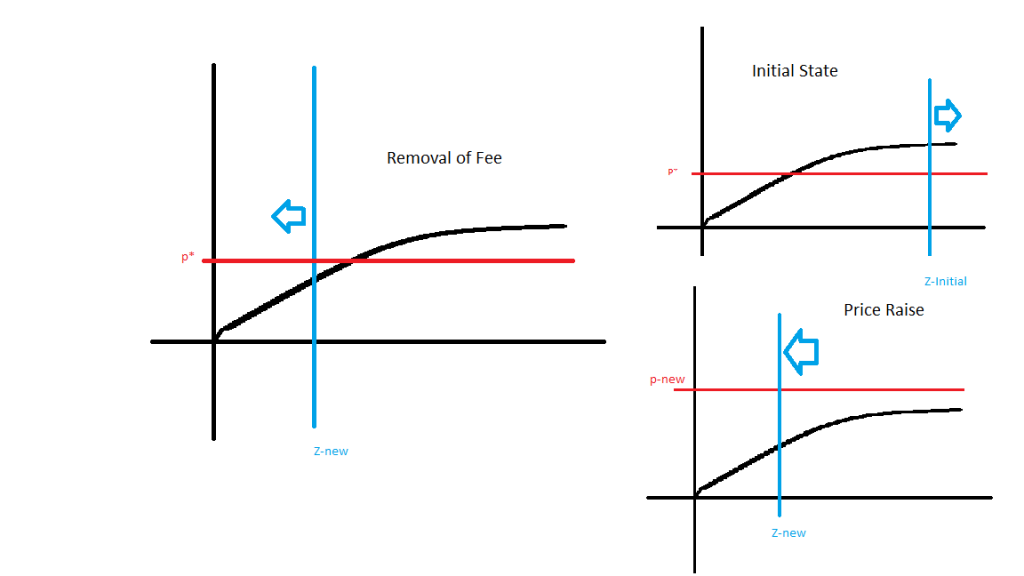Facebook Subscription Fees
In 2011 there was a rumor spreading that Facebook was to start charging all users a subscription fee for use. Because Facebook users knew that did not have another network equivalent to Facebook to join for free, this subscription fee idea anger many. The reason there was no equivalent networking site to Facebook was not because of the tangible facets of Facebook’s design or structure but the intangible network effects of its immense user base. Because of the large fraction of adoption within the population the value of being on Facebook is far larger than for an identical site with few users. We can use or analysis of the economy with network effects to determine a possible reason as to why Faceboook decided not to charge a subscription fee.
If we assume that there exist two functions r(x) and f(z), where z is the population using the good, where the reservation prince of consumer x is the product, r(x)f(z). Here the function f(z) is the network benefit effect of much of the population using Facebook. Here f(z) increases with z because as more people use Facebook it becomes more useful as a channel of social interaction. Now because r(x)f(z) represents the reservation price to a consumer, if the price of subscription to Facebook is less that r(x)f(z) users will pay the price to continue to use Facebook. Now the number of people on Facebook is still growing at least in the united states the population growth is starting to slow and approach an equilibrium value. If we assume the graph of r(x)f(x) looks somewhat like the following and where p* is the current cost to a user to be on Facebook and the curve represent the value of Face book to a user relative to the fraction of the population on Facebook, we can see the possible effects of scenario where Facebook charges a subscription fee on its user base.
In the initial state the value of Facebook to a user is greater than current cost of 0 dollars,P*, plus the inconvenience of use. This is currently causing the population fraction to grow from z-initial from upward pressure.
Now if Facebook were to charge a fee and move the price to p-new, it’s possible that it is too high for the market. This would cause a reduction in the purchasing fraction to z-new which Facebook would notice and then reduce or take away the fee, go back to p*.
However now that there is no subscription fee the population of Facebook still might be decreasing. This could be because the purchasing fraction drops below the equilibrium point where the value of being on Facebook is equal to the cost. If this happens the population of users on Facebook would continue to decrease possibly to 0 if Facebook did not change in some way other than price.
A scenario like this is likely why Facebook decided not to create a subscription fee, as too high a price would drop the user population too much and would be catastrophic for the company.
http://www.forbes.com/sites/kashmirhill/2012/10/08/now-that-facebook-is-charging-users-why-not-offer-these-paid-features/
http://www.bizjournals.com/sanjose/news/2012/06/11/facebook-user-growth-slowing-down.html

